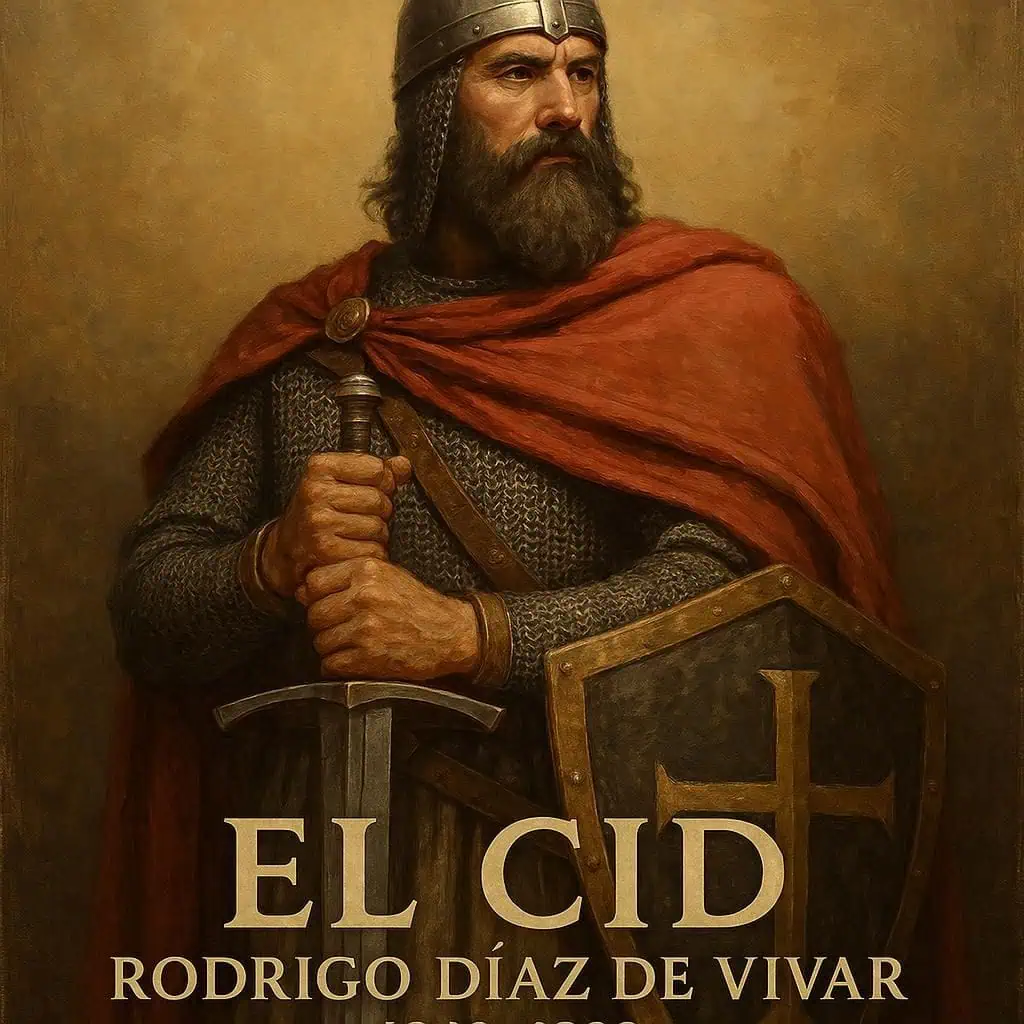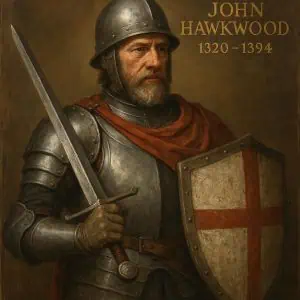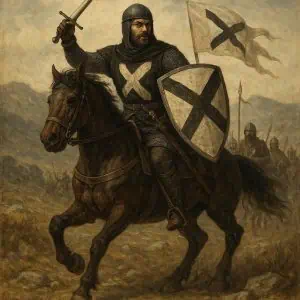Rodrigo Díaz de Vivar (1043–1099), better known as El Cid Campeador, was a renowned Castilian knight and military leader whose courage and strategic brilliance made him one of the most iconic figures of medieval Spain. Rising from the court of King Ferdinand I, El Cid served both Christian and Muslim rulers during the turbulent era of the Reconquista — the long struggle to reclaim Iberia from Moorish control. Celebrated for his skill in warfare, loyalty to his comrades, and code of chivalry, El Cid became a symbol of Spanish unity, bravery, and honor. His victories, especially the conquest of Valencia, secured his place as a national hero and one of Europe’s greatest medieval warriors.

Although he didn’t come from a rich or powerful family, Vivar established himself at the court of Ferdinand the Great through his valour and military prowess.
He later became the commander of the military under Ferdinand’s heir, Sancho, and launched a military career which would spanned several decades.
His career was marked by victories against Christian and Muslim forces alike, and he would serve both sides during different parts of his life.
💡 Did You Know? Fascinating Facts About El Cid
His ability to command loyalty and respect across cultures made him one of the most unique leaders in medieval Spain.
The word “sīd” means “lord” in Arabic — showing the deep respect even his former enemies had for him.
The loyal white warhorse became legendary in Spanish folklore and was said to have outlived his master.
The tomb of El Cid Campeador remains a national shrine honoring Spain’s greatest knight.
Rodrigo Diaz de Vivar in Castile
Rodrigo Diaz de Vivar, also known as El Cid, first began attached to the Castilian court during the reign of Ferdinand the Great.
Upon Ferdinand’s death, his son Sancho ascended to the throne. Sancho appointed Rodrigo as the commander of the Castilian army.
Rodrigo then led the Castilian campaigns against Muslim armies of Andalus as well as the armies of Sancho’s brothers in the neighbouring kingdoms. In doing so, he was critical in helping Sancho establish his control on the Castilian territories.
Rodrigo Diaz de Vivar *Exile from Castile
Sancho was murdered in 1072 and his brother Alfonso ascended the Castilian throne. Since Rodrigo had been an ardent supporter of Sancho, he soon lost the favour of the crown under Alfonso’s reign.

Alfonso first stripped him of the command of the Castilian army and finally exiled him from Castile in 1081. Although he had led a number of battles against Muslim armies, he went over to the Muslim rulers of the taifa of Zaragoza.
Commander of Muslim Armies *Rodrigo Diaz de Vivar
After he was exiled from Castile, he offered his services to the Muslim ruler of Zaragoza in 1081. It was here at the Muslim court that he was given the title of El Cid which means “The Master”.
He directly remained attached to Zaragoza until 1087. During this period, he led the multi-ethnic army of Zaragoza against Christian Sancho I of Aragorn as well as Muslim neighbours of the Zaragoza taifa.

When Yusuf ibn Tashfin launched his Iberian campaign to reinforce the Muslims in Andalus in 1086, Rodrigo was still leading the Muslim armies.
He went on to command a major Moorish force at the Battle of Sagrajas where the combined might of the Muslim armies defeated a large combined force of Christian kingdoms.
Ruler of Valencia
In 1087, Rodrigo was recalled by Alfonso after he suffered a defeat at the hands of Almoravids.
Although Rodrigo paid a visit to the Castilian monarch, he soon left the kingdom. In the conflict between Almoravids and Christian armies, Rodrigo was able to retain a combined Muslim and Christian army of his own.

He used this army to subdue the ruler of Barcelona in 1090. He then went on to gain control of a number of other towns, finally becoming the independent ruler of Valencia in 1094.
The city had both Christian and Muslim populations, with both represented in the administration and army of the city.
El Cid went on to rule the city until his death in 1099.
❓ Frequently Asked Questions About El Cid
1. Who was El Cid?
Rodrigo Díaz de Vivar (1043–1099), known as El Cid Campeador, was a Castilian knight and military leader in medieval Spain. He became a national hero during the Reconquista for his victories against both Christian and Muslim armies.
2. Why is Rodrigo Díaz de Vivar called “El Cid”?
The name “El Cid” comes from the Arabic word *sīd* meaning “lord” or “master,” while “Campeador” is a Spanish title meaning “champion.” Together, they reflect his reputation as a respected and undefeated warrior.
3. What role did El Cid play in the Reconquista?
El Cid fought during the 11th-century Reconquista — the Christian effort to reclaim the Iberian Peninsula from Muslim rule. He served both Christian and Muslim leaders, navigating complex alliances and earning universal respect for his honor and skill.
4. What was El Cid’s greatest military achievement?
His most famous victory was the conquest of Valencia in 1094, which he ruled as an independent principality until his death. This solidified his legacy as a brilliant strategist and leader.
5. Was El Cid loyal to the Spanish crown?
Despite periods of exile under King Alfonso VI, El Cid remained loyal to Castile and its Christian cause. His ability to maintain alliances across faiths made him a unifying figure in medieval Spain.
6. How did El Cid die?
El Cid died in 1099 in Valencia, likely of natural causes. According to legend, his followers placed his armored body on horseback to inspire their troops in one final victorious charge against Moorish forces.
7. How is El Cid remembered today?
El Cid remains a national symbol of Spanish heroism and chivalry. His life inspired epic poems, such as *El Cantar de mio Cid*, and countless stories of bravery that endure in Spanish culture.
⚔️ Test Your Knowledge: El Cid Quiz






